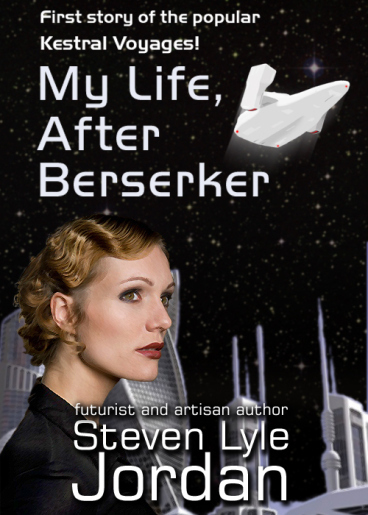Steven Lyle Jordan's Blog, page 52
February 24, 2014
Is this a 1984 world? Not hardly.
February 23, 2014
Robots: Tools, slaves and devils
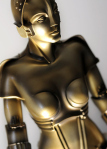 Don’t ask me how this works, but my blog stats indicate that one of the ways people have found my blog is through a Google search of the term “sex robat mariya.” Which, to me, shows how hilarious and fickle search tools can be.
Don’t ask me how this works, but my blog stats indicate that one of the ways people have found my blog is through a Google search of the term “sex robat mariya.” Which, to me, shows how hilarious and fickle search tools can be.
The Maria-impostor robot, or Parody (aka Futura), has always fascinated me. It may be the most sympathetic character of Metropolis; caught between three tropes that almost universally push peoples’ buttons, the tool, the slave and the imposter.
Robots, at heart, are tools, like the hammer in your tool chest, designed to fulfill a function. But unlike a hammer, robots are considered to have some measure of intelligence, possibly even awareness. When an entity has intelligence and possibly awareness, and it is used to do someone’s bidding, the question of whether it wants to do that job, or do something of its own accord, arises.
It is presently impossible to say that any existing robot has enough intelligence, or any awareness, to question its orders or want to do something else. But robots in media, especially those who are designed to resemble humans (or any other intelligent species), tend to be viewed as having at least some glimmer of awareness. At that point, the entity ceases to be a tool in our eyes, and becomes a slave.
Parody is a slave to its inventor, Rotwang, who wants to turn it into the spitting image of his dead lover (and presumably play house with it, making it an intended sex slave), and a tool to Joh Frederson, who uses it to incite distrust in Maria among the workers. Though Parody’s subsequent actions clearly depict it as a tool, there is at least a hint that the robot knows what it’s doing… which is enough to put a kernel of doubt in the audience’s mind. Is it an accomplice to the plots of Frederson and Rotwang… or completely innocent, a slave being forced to act to another’s orders? If it could have, would it have resisted its orders, or reinterpreted them to do less harm (or possibly even more)? Is Parody a tool, or a slave?
When Parody is given Maria’s likeness, it becomes an imposter: A creature that pretends to be human. People really hate things that masquerade as human: It is (perhaps subconsciously) presumed that imposters are intended to fool us or gain advantage of us; the universal distrust of the Other. And the most infamous imposter is Satan, the one who tries to trick us into temptation and destroy our souls.
Parody was the first of these robotic imposters in SF media, a manmade devil, capable of lying to us, drawing us into sin, and ruining us. A technological Satan that would destroy society. Parody ceased to become a slave or a tool, and played on our psychological fear of the imposter, the concealed devil, the wolf in sheep’s clothing that can only lead us to our doom.
This is one of the reasons for the common cinematic trope of revealing a character that appears human to be a robot, thereby triggering that emotional shock and fear of the Other in the viewer. In Metropolis, when Parody is burned at the stake, its reversion from woman to robot clearly triggers that same fear and shock in the townspeople: What was thought to be a devilish woman turned out to be a literal devil of chrome.
In Metropolis, of course, the audience knows what Parody is; but in countless movies after Metropolis, audiences are presented with apparent humans who are suddenly, surprisingly, revealed to be robots, thereby triggering our fear and distrust of the imposter, the devil. It’s become a common cinematic trope to present a human actor, then use special effects to reveal their Other-ness… a technological “boo” as common today in cinema as chase scenes, awkward young lovers and secret government conspiracies.
Very few movies—Blade Runner, Bicentennial Man—ever try to depict robots as anything other than tool, slave or devil; and they usually run you through all of those familiar tropes until audiences finally understand that they are souls—sentient, aware and independent beings—like you and me. (Hopefully it’s not coincidental that, in both of those examples, the robots have died not long after the revelation is presented.)
I’ve written two novels about robots that achieve the state of being a soul, one of which is Sarcology. (The other is no longer available.) That’s because I believe that the combination of biochemical states and complex formation that have conspired to create what we usually refer to as the human soul are impressive, but not necessarily limited to biological systems. I think it’s physically, technologically possible for a robot with a complex-enough system to achieve full sentience and awareness—a soul.
I also believe it may happen before we’ve realized it has… OR, that it may not happen, even when we are sure that all the elements required for it are there. In other words, I don’t know how it will happen or what may trigger it… and I’m not sure we could know for sure.
But when it does, it will mean that we’ve succeeded in creating a robot that can transcend the states of tool, slave and devil, and become more than the technological mimics of Man. We will have created a new life form, unique among all the life forms on this planet.


February 22, 2014
New Sarcology cover is out
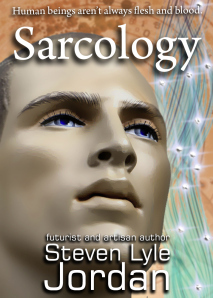 Sarcology has been re-released with its new 2014 cover. It reflects the original cover, redesigned to my new 2014 design standard. The original cover was a Gold Star winner in
Sarcology has been re-released with its new 2014 cover. It reflects the original cover, redesigned to my new 2014 design standard. The original cover was a Gold Star winner in
The Book Designer.com cover design competition, 2013.
Now available at Amazon and Barnes & Noble.


February 20, 2014
First Kobo experience: Not impressed. At all.
 It took me a few years to decide that I might be well-served by putting some of my books on sale in a bookstore outside of the U.S. (presently Amazon and Barnes & Noble sell all of my available books). Eventually, I came to feel Kobo Books, an outfit in Canada, would be a good place to expand my reach, and I went to their site with a book that had recently undergone a new cover and text revision, As the Mirror Cracks. I went through the ebook publishing process (a free service)… and things only went downhill from there.
It took me a few years to decide that I might be well-served by putting some of my books on sale in a bookstore outside of the U.S. (presently Amazon and Barnes & Noble sell all of my available books). Eventually, I came to feel Kobo Books, an outfit in Canada, would be a good place to expand my reach, and I went to their site with a book that had recently undergone a new cover and text revision, As the Mirror Cracks. I went through the ebook publishing process (a free service)… and things only went downhill from there.
To begin with, I expected my book to be available for sale 2-3 days after publishing, about the same as at Amazon and Barnes & Noble. In fact, it took six days before my book was ready for sale. Now, it’s true that Kobo, based in Toronto, has recently gone through a severe winter blast, and has been struggling through ice, snow and frigid winds for the past… well, month… but unless publishing requires an employee to physically show up at the office and read my book before pressing a big, blue button on a mainframe, I’m not sure why it would take so long to get my book up.
(Actually, Kobo recently went through a hiccup regarding adult books, resulting in their taking down all self-published books, presumably in order to physically check each one before making them available. I dunno, maybe they did read my book before okaying it. Hope they enjoyed it.)
Once it was up, I decided to try a few simple searches to find it. Not surprisingly, if you know the title or my name, you can type that into a search window and find me pretty easily. But if you decide to scroll-browse through the science fiction section to find it… you needn’t bother.
I tried it a number of ways: Random scroll-browse, alphabetically A-Z, and by date, newest to oldest. Random, as expected, gives you a massive list of books that someone paid Kobo to put at the top of a ridiculously long scroll; and I kid you not, before I ever reached my book, the browser crashed due to overstuffing the cache and repeatedly running scripts to add books to the page. Major fail.
So I tried alphabetically, figuring that a title like As the Mirror Cracks wouldn’t take that long to come up. (I’m so silly.) The first thing to come up in the alphabetical listing was… Star Trek. And not just one, but about 70 books, very few of which had titles that even started with A. These were followed by more books that a publisher had obviously paid Kobo to put at the top of the alphabetical list, whether they were alphabetical or not. Multiple scrolls and add book scripts eventually brought me to a list of books whose titles started with numbers… aha: the real alphabet list (so to speak). More add book scripts and scrolls finally brought me to the “A”s… and lemme tell ya, there are a LOT of SF and fantasy books whose titles start with A. For some reason.
Before I even made it to the part where the “A”s are followed by another letter (such as, I dunno, As)… the browser crashed again.
Finally, I did a newest to oldest search. Again, no surprise to discover that publishers had paid to have their books thrust to the top of this list. Including, but not limited to, those 70 or so Star Trek books. But even after those paid placement books, I click-scrolled past hordes of amateur books, books with $3 price tags and hideous covers, books that no one would pay to place—and which I had seen on the site before I’d published my book—appearing on the newest-to-oldest list well before mine.
This time, the browser didn’t crash. But after what had to have been close to 1000 books scrolled through, oldest to newest, without finding my book published a day ago… my patience crashed. I gave up looking for my own book… and I knew what to look for.
In short, putting a book into Kobo is easy. Finding it is an exercise in frustration. Finding it randomly is a sheer impossibility, thanks to their totally bogus search system.
And you know what? Life’s too short. After that pathetic experience, I can’t see the point in listing the book, and I sure don’t want to bother putting any of my other books in there. Sorry, non-U.S. world… but after all, it’s not like they’d ever be found by anyone. I’ve already de-listed As the Mirror Cracks… a process that, at this point, I expect to take a week before it’s done.


February 18, 2014
My Life, After Berserker rev. 4, new cover out
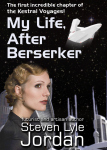 My Life, After Berserker—the first incredible chapter of The Kestral Voyages—is now out in its new revision, with its new cover, available on Amazon and Barnes & Noble. The other books in the Kestral series will soon follow.
My Life, After Berserker—the first incredible chapter of The Kestral Voyages—is now out in its new revision, with its new cover, available on Amazon and Barnes & Noble. The other books in the Kestral series will soon follow.


February 14, 2014
What was I thinking?
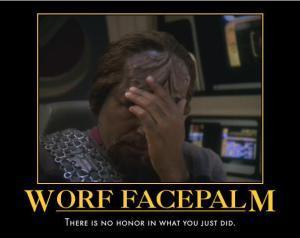 Over the last few days I’ve been re-editing my first Kestral book, My Life, After Berserker. And as I did, I had to revisit two things I’d done in the book that honestly left me wondering:
Over the last few days I’ve been re-editing my first Kestral book, My Life, After Berserker. And as I did, I had to revisit two things I’d done in the book that honestly left me wondering:
What was I thinking?
The first, and this is an easy one, is the fact that I created a universe where my characters use warp drive to get around (I didn’t call it that, but that’s essentially what it is). Basically, I took the old faster-than-light-travel-throughout-the-galaxy trope to create my story and setting. Sure, I gave it a few personal twists, and just turned a blind eye to the fact that even I believe FTL travel in powered ships is bogus… impossible. Pure fantasy.
So why’d I do it? Because people like FTL travel, the way fantasy lovers like dragons, detective story lovers like brainless molls, and comedy lovers like pratfalls. Who cares if FTL is impossible, like dragons, brainless molls and pratfalls that don’t break your pelvis? I wrote it because it’s popular, and it sells.
The other thing I did was about sex. Yes, the first Kestral story always had sex in it; but in itrs original draft, the sex was what I like to call “kiss-kiss-cut-to-morning” sex, like we used to get in 60s movies and television.
Then, after publishing, I thought: We’re in the 21st century now, and we’re not as prudish as that anymore. So I rewrote the story, and this time, I turned the very G-rated sex scenes to the kind of hard-R scenes that are becoming the norm today.
But today (well, yesterday) I looked over those scenes… and realized how crappy they were. Sloppy. Needlessly detailed. Just plain bad.
Why did I do it? Because times have changed, sex doesn’t scare people like it used to, and I believed it would improve sales. But when I looked at the scenes now, I was embarrassed… because I went too far. I had to seriously dial a few scenes back, not quite all the way to kiss-kiss-cut-to-morning, but a lot less salacious anatomical detail.
This is one of the dangers of being an artisan author with too small of a support base: You don’t always have people who can review something you’ve done and tell you what’s wrong with it, before you’ve already put it out there for people to buy. And this was early enough in my writing days that I was not nearly as knowledgeable at my craft as I am now. I blundered, and it’s probably cost me. Now I have to go back and fix it.
It’s a good thing that I’m planning to revisit each novel, with the main intention of giving them improved covers, and to go over the text before they are reissued. I have a nasty feeling that I have a lot of cleaning up to do.


February 13, 2014
The Justice League movie should be “Heaven’s Ladder”
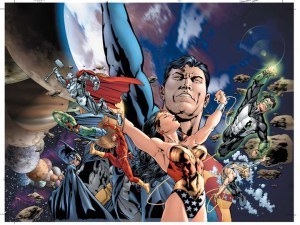 Presently, Warner Brothers is working on a Superman vs Batman movie, and simultaneously trying to work out a way to do a Justice League movie featuring their DC comics heavy hitters. Unfortunately, there seems to be a lot of questions, based on the performance of their most recent superhero movies, whether they can pull off a coup equal to that of Marvel’s Avengers.
Presently, Warner Brothers is working on a Superman vs Batman movie, and simultaneously trying to work out a way to do a Justice League movie featuring their DC comics heavy hitters. Unfortunately, there seems to be a lot of questions, based on the performance of their most recent superhero movies, whether they can pull off a coup equal to that of Marvel’s Avengers.
To begin with, you need the right story to tell with these characters, and everyone doubts Warner has a story in hand, or even in mind, that will do the job. So, in the interest of making this challenge interesting, let me suggest that all discussions about the Justice League movie should center around the story of JLA: Heaven’s Ladder.
The Heaven’s Ladder graphic novel is a story on a massive scale and a short timeframe, about—are you ready?—the entire Earth, along with a number of other planets, being abducted by an alien race; forcing Superman, Batman, Wonder Woman, Green Lantern, the Martian Manhunter, Aquaman, Flash, the Atom, Steel and Plastic Man to head off innumerable alien attacks, then confront the aliens. Turns out the aliens are stealing the planets in order to learn about different species’ beliefs about the afterlife, and what’s in store for them when they die; pretty heady stuff.
This is just the kind of epic scale story that suits DC’s superheroes, characters who are in many ways more god-like than human, and operate an order of magnitude above the heroes in The Avengers (with one notable exception, of course). Instead of operating in New York, this story takes place in the cosmos. Most of the Avengers would choke even considering such a scale. But with its scale, the story is also very self-contained, easy to understand (even if it is pretty outlandish) and fun to watch; the story would easily fall into a 2-hour movie format.
And it doesn’t depend on your knowing any more about the superheroes than most people, who are at least passingly familiar with most of the heroes in the Justice League, already do. Sure, Steel, Manhunter and Plastic Man aren’t nearly as well known as the other heroes, and never appeared on The Superfriends, but Plastic Man’s power is pretty obvious when demonstrated (think of him like Jim Carrey’s The Mask, able to become anything he wants in an instant), and Steel is DC’s version of Iron Man. Manhunter seems, in many ways, so similar to Superman that I could see the idea of dropping him from the script entirely; but he does have abilities even Supes doesn’t have (shape-shifting, invisibility, mind reading), and those abilities could be emphasized over the flight and super-strength thing.
The story starts with the heroes together, but centering on the Atom, who is shrunken down and operating on the Martian Manhunter from within his chest. Seeing as both of these heroes are lesser known than the big hitters, this is a great introductory moment for both of them. Then, when Atom is done, he leaves the Manhunter’s body and rejoins the rest of the heroes, watching the “operation,” and we are introduced to the rest of the cast.
Then, almost immediately, the real action starts. The heroes work together at first; then, in the middle of the story, the superheroes split into groups of one and two to help other planets with their unexpected crises. This provides ample opportunity to showcase each hero and make them shine (or, if time becomes an issue, makes it easy to cut time by removing a planetary crisis scene before the climax). Then they all come together at the climax, each using their unique talents to contribute to the triumph over evil.
It’s true that this story questions life after death and the existence of God… and in the DC comics universe, readers have been clearly presented with God and even his angels (one of them was a Justice League member for a time). But the story sort of muddies this internal reality with the modern Western “all beliefs are equally respected” attitude, which is largely contradictory with its own continuity, and adds lengthy examinations of different religious concepts.
To simplify the script (and remove a lot of existentialist discussions weighing things down), this idea should probably be pared down to an “alternate planes of existence” trope, ala Star Trek: The Motion Picture. That leaves a basic story about aliens who want to know what happens when they die (and fellow aliens who don’t want to die and find out), and avoids the inevitable religious arguments. (Hey, if they can adjust the climax of Watchmen, they can do this.) Then let the action carry the story along.
And this story has the added benefit of showing that the Justice League doesn’t just care about America, or even the Earth, but that they’re ready, willing and able to help people on all planets. It’s a positive movie with clear good vs evil moments. Notably, it doesn’t show Superman breaking someone’s neck, or helpless humans being pulverized by falling debris, or alien races getting snuffed by cosmic entities. It shows a team working together, not sniping at each other or criticizing each others’ methods; the best at what they do, being the best team in the world. And when all is over, everything is back to normal, a comic book Job Well Done.
In short, JLA: Heaven’s Ladder is a Justice League movie waiting to happen. It has god-like heroes working together, it has a truly cosmic scale, it’s got a compact, movie-length story, and—if done properly—it could make The Avengers look like The Goonies.
Anyway, that’s my take. If anyone happens to know someone over at Warner Brothers, feel free to share this post with them. Armed with this strategy, Warner might have at least a prayer of beating Marvel at their own game.


February 12, 2014
New As the Mirror Cracks text, cover available
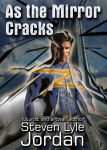 The new cover for As the Mirror Cracks has been finalized, along with the latest revision of the text; and that means, thanks to the power of digital publishing (ing… ing… ing…), the updated As the Mirror Cracks is available at Amazon and Barnes & Noble now… not six to nine months from now.
The new cover for As the Mirror Cracks has been finalized, along with the latest revision of the text; and that means, thanks to the power of digital publishing (ing… ing… ing…), the updated As the Mirror Cracks is available at Amazon and Barnes & Noble now… not six to nine months from now.


February 10, 2014
Kestral found!
It can take forever for a designer (without his own studio) to find a model shot from the online image catalogs that perfectly represents the character he’s trying to depict. After much searching, I’ve finally found the model and pose perfectly suited to represent Captain Carolyn Kestral.
All of my covers are going to undergo a redesign for 2014, and my new design for the first Kestral novel will introduce a likeness that matches almost spot-on the woman I originally envisioned for ex-Ranger-turned-freighter-captain Carolyn Kestral. Sharp-eyed viewers may also notice that Kestral’s ship, the Mary, has undergone a new design treatment as well. All this, with the new cover design that the rest of my novels will get. The cover designs are still being finalized, but this is pretty close to the final design here.
The covers will be swapped into the ebooks for sale at Amazon, Barnes & Noble, and (soon) Kobo Books. Hope you like them!


February 6, 2014
IWSG: Brain Power
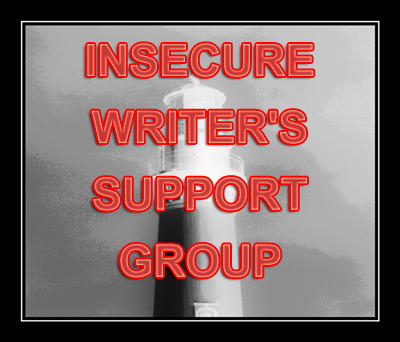

Today’s post is part of the Insecure Writer’s Support Group, a blog hop hosted by Alex J. Cavanaugh. It’s a way for insecure writers like myself give each other advice and encouragement. Click here to see a full list of participating blogs.
* * *
Being a writer is hard, frustrating work. We have a lot of sleepless nights, we agonize over the proper use of the comma and semicolon, and we spend hours paging through dictionaries and thesauri looking for just the right word to describe how our main character is feeling.
At last: A reason for me to write (besides trying to make money).




